Estimated reading time: 06 minutes.
July/2016 - The 8-15mm f/4L USM is the second official Canon fisheye lens for the EF mount. Taking the place of the 1987 15mm f/2.8 Fisheye, the new 2012 model looses a full stop in the aperture, but gains the zoom flexibility, down up to 8mm. On such spec a circular 180º image is rendered on the full frame image plane, a unique look that’s unfortunately attached to this model; unpractical for most kits. But it is not: if used at 10mm on APS-C, or 13mm on APS-H, it shows the same full frame coverage as 15mm, thus suitable for all cameras. Here tested on the EOS M, it was a load of fun around the streets. But is it worth the US$1249 L series price tag? Let’s find out! Nice reading.

At 8.9 x 7.7cm alone, or 11.2 x 9.3cm attached to the supplied lens hood and both caps, all at 540g, the EF 8-15mm f/4L USM is the smallest piece on Canon’s L lineup. Bigger than the older 15mm f/2.8 Fisheys prime (6.1 x 7.x3 at 330g), the zoom got new finishings and operation, better suited for professionals, worth the price for those working all the time. Outside, the rubberized plastic is less prone to scratches (it feels metal inside), much better than the vintage prime and its metal built-in lens hood, that scratched easily. On the new zoom you can attach and remove the hood at will, and it attaches to the new click-type frontal cap; more practical than the f/2.8 all-metal cap. So just for its built it’s already worth the US$1249, as expected from Canon’s top of the line.
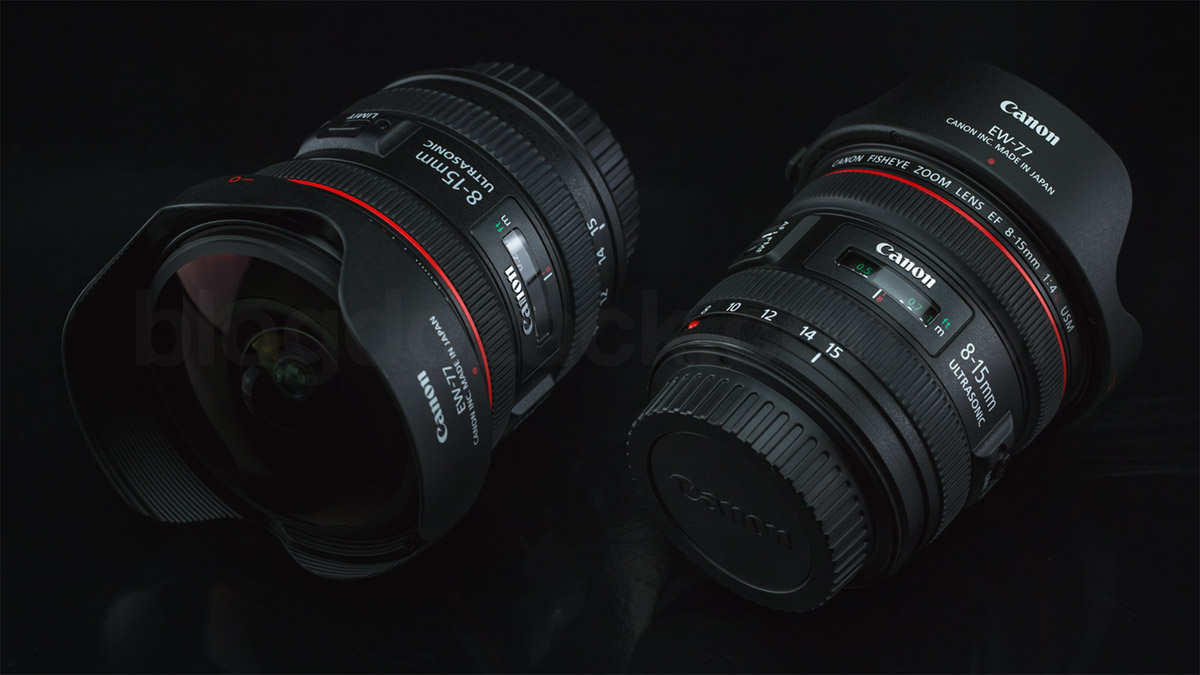
In your hands it’s interesting because, although it’s zoom and smooth as any L series, it’s all miniaturized to fit the short 8-15mm spec. At the rear, the metal zoom ring is rubberized, with a 80º turn; fast from end to end, but with enough pressure not to move by its own. The 1.6cm width might feel small for a zoom ring, but the idea is not to use it at all times like we’re (badly) used to on variable lenses. The idea is to match it to your camera’s format, and leave it there. There are graphical markings for full APS-C and APS-H coverage, or a limiter at 10mm for just APS-C. It’s all practical to use, felling more like a “flexible prime” than a zoom to “close” on distant subjects.
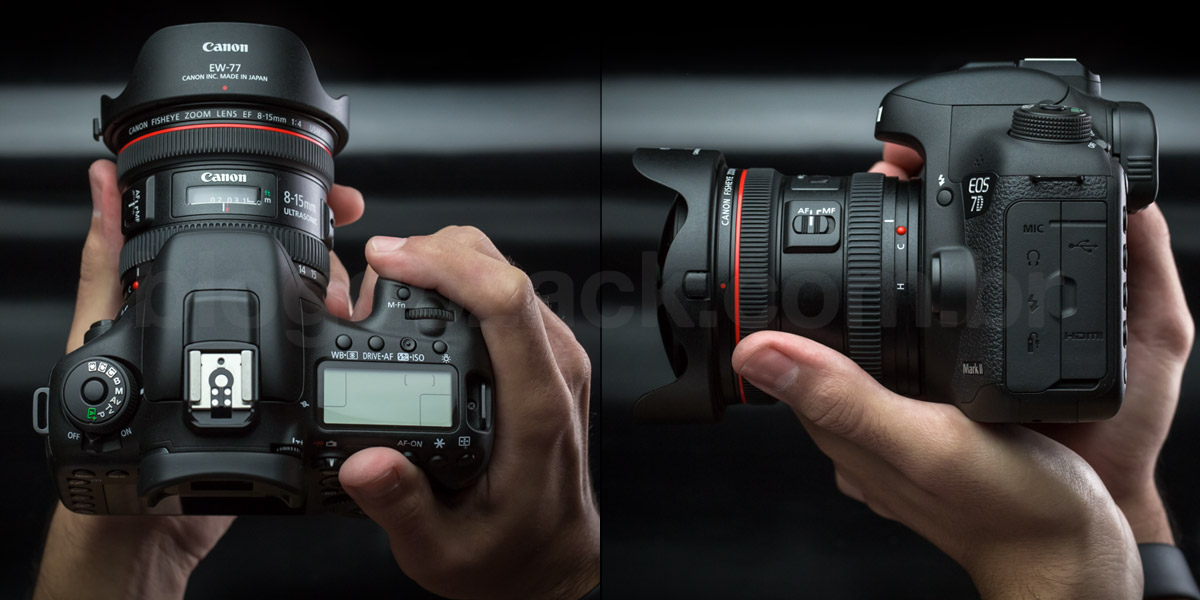
At the front the manual focusing ring is a pleasure to use, with a reasonably deep rubber piece on top of a metal ring, totally precise and totally unnecessary. That’s because the all internal AF motor got a ring-type USM upgrade, fast and silent; much better than the older f/2.8 Fisheye noisy micro-DC (that’s broken on my copy). But focusing is almost redundant on the wide angle, as the longer depth of field makes everything look in focus. Anyway, Canon didn’t leave the L series smooth operation out, supporting the full time manual (use the ring at any time to adjust focus), even squeezing a distance window between both rings (with feet, meters and IR markings).
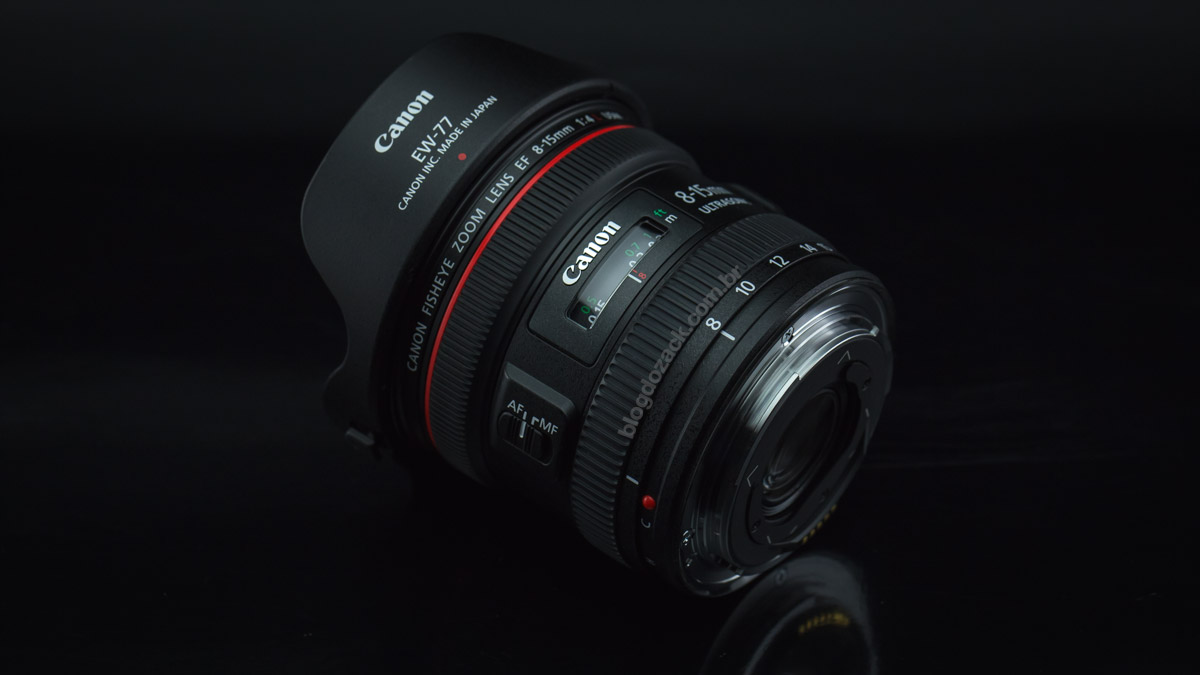
Unfortunately the convex frontal filter doesn’t support filters, not even supporting the lens hood at 8mm on full frame. So inside the lens mount there’s a 3.1 x 3.1cm gel filter holder, on top of the rear element, a piece that moves as you zoom. To complete the impeccable L built, there’s a rubber gasket around the mount, and there are other declared sealing around the body, to prevent water and dust getting inside the lens. Overall it’s exactly the same zoom operation that you get on the gigantic EF 200-400mm f/4L IS USM, but here at just 9cm on the f/2.8 Fisheye upgrade.

“Financial District” at f/5.6 1/320 ISO100 @ 10mm; all photos with the Canon EOS M.
With a completely revamped optical formula at 14 elements in 11 groups (it was 9el in 7gr on the prime), using UD glasses, aspherical pieces and SW coating (reduces flaring, enhances contrast), as a matter of fact the performance of the new zoom EF 8-15mm f/4L Fisheye USM is the same as the 15mm f/2.8 vintage prime. That is: intact corner to corner resolution; perfect contrast no matter the light situation; and a lateral chromatic aberration nightmare around the edges, that were NOT fixed on the new lens. And frankly, I wasn’t expecting it to be. Considering how newest DIGIC processors handle files, or most post-processing software offering single click fixes, although it is flawed, the zoom is a very welcomed addition, bringing the Fisheye look to all formats.

“Financial District II” at f/5.6 1/250 ISO100 @ 10mm.
The biggest “issue” is indeed the colored lines on high contrast edges, around the frame. Any creative post-processing saturating the colors or pushing the files dynamic range, and magenta + green lines appear on off-axis details, demanding some form of correction prior to publishing. Honestly I’ve never seen any flawless Fisheye lens, and considering the Canon EF is a zoom, you can cope with the aberrations if you know how to handle the files. Yes, I was expecting some improvement, but it didn’t happen. Those happy wit the vintage prime, there’s no need to upgrade.
100% crop, around the corners, the high contrast edges get colored lines from the chromatic aberration, displayed before and after correction.
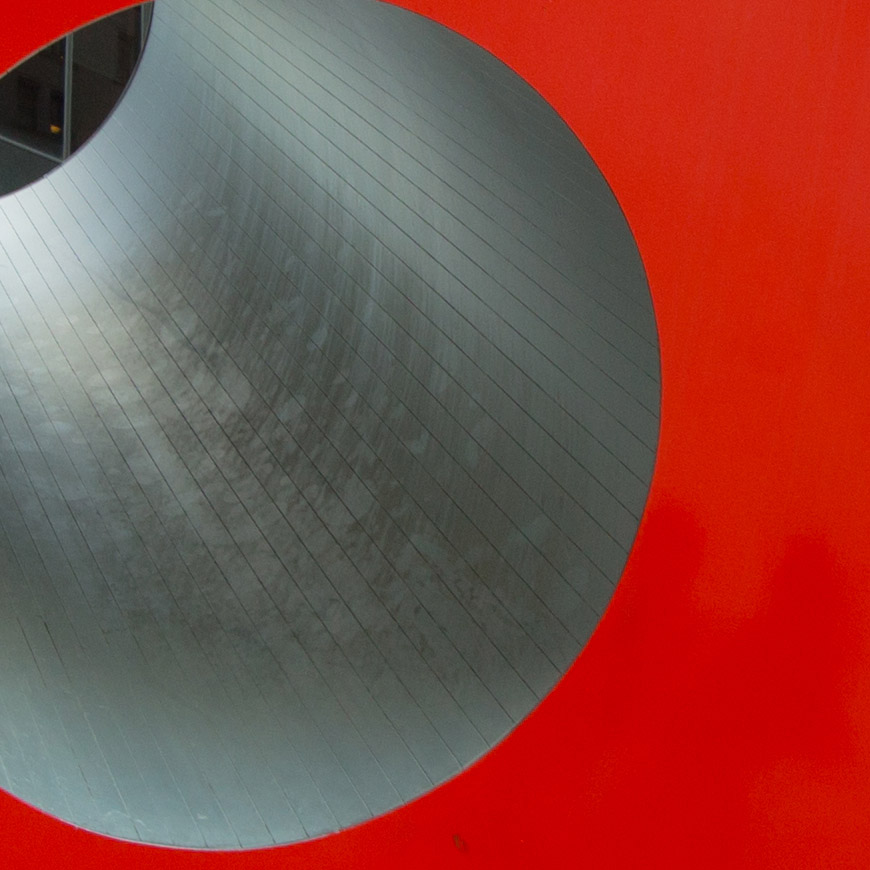
100% crop, but around the center frame, about 80% of it, is free of aberrations.
100% crop, architectural lines, graphics and trees agains the bright sky light will definitely show some lateral CA.
As a headline we have the intact edge-to-edge high resolution, a significant step ahead of low cost fisheyes. It’s ridiculous how much better the EF L zoom is to last year’s Samyang 8mm T3.8, both tested on the EOS M, with perfect edge details on the Canon that didn’t show on the korean prime. It’s the main reason to have it on your kit, to keep the same L performance we’re used to across the EOS system: ease of use, lifetime built, and ready-for-printing files. The contrast is also high and perfect, no matter the situation, another advantage to low cost lenses that “explode” under strong light spots. Even at f/4 the Canon lines are well defined, showcasing the high quality glasses.
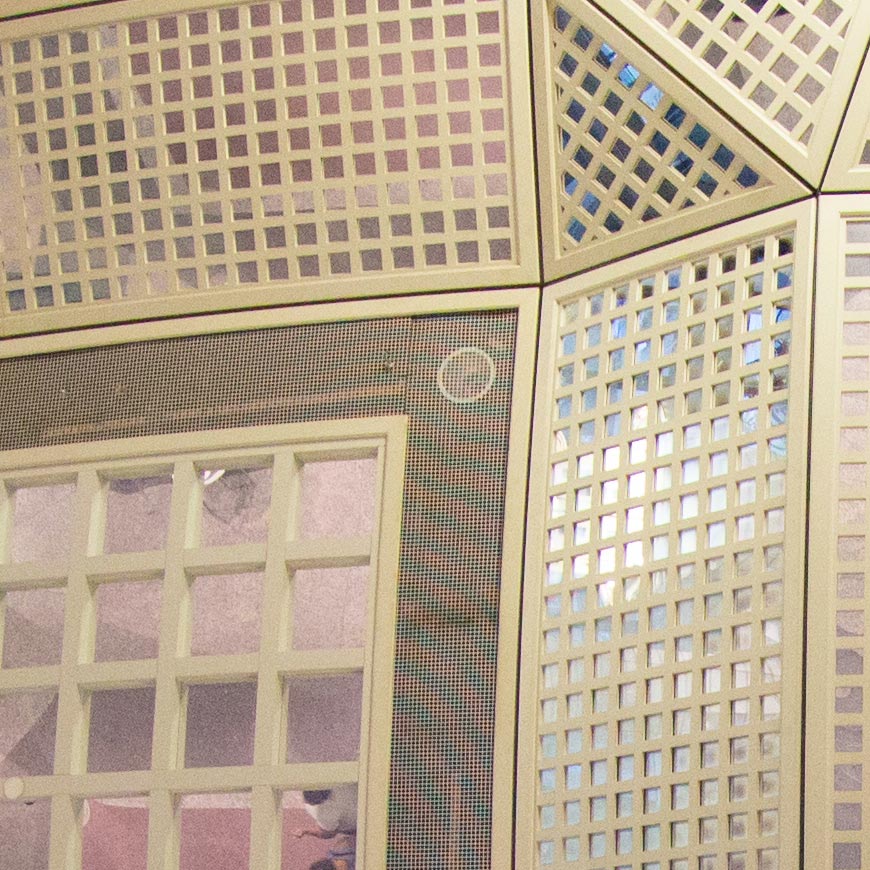
100% crop, even wide open the performance is very high, generating moiré on the 18MP APS-C EOS M.
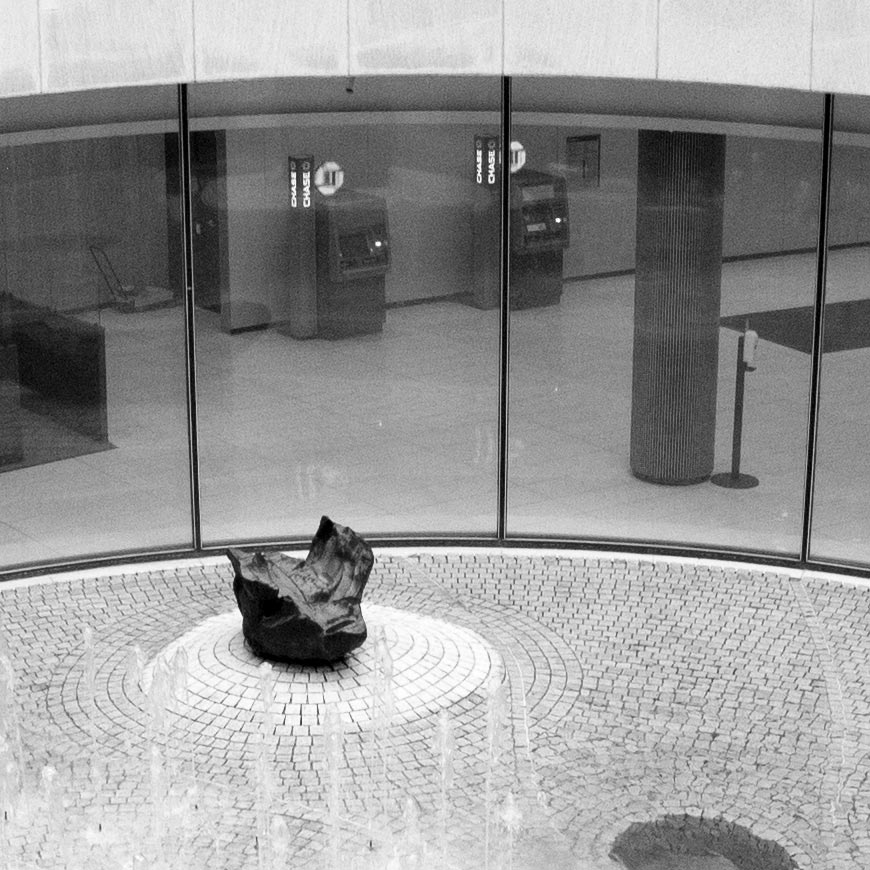
100% crop, the Fisheye resolution is very high, uncommon to such images (notice the finishing on the indoor column).
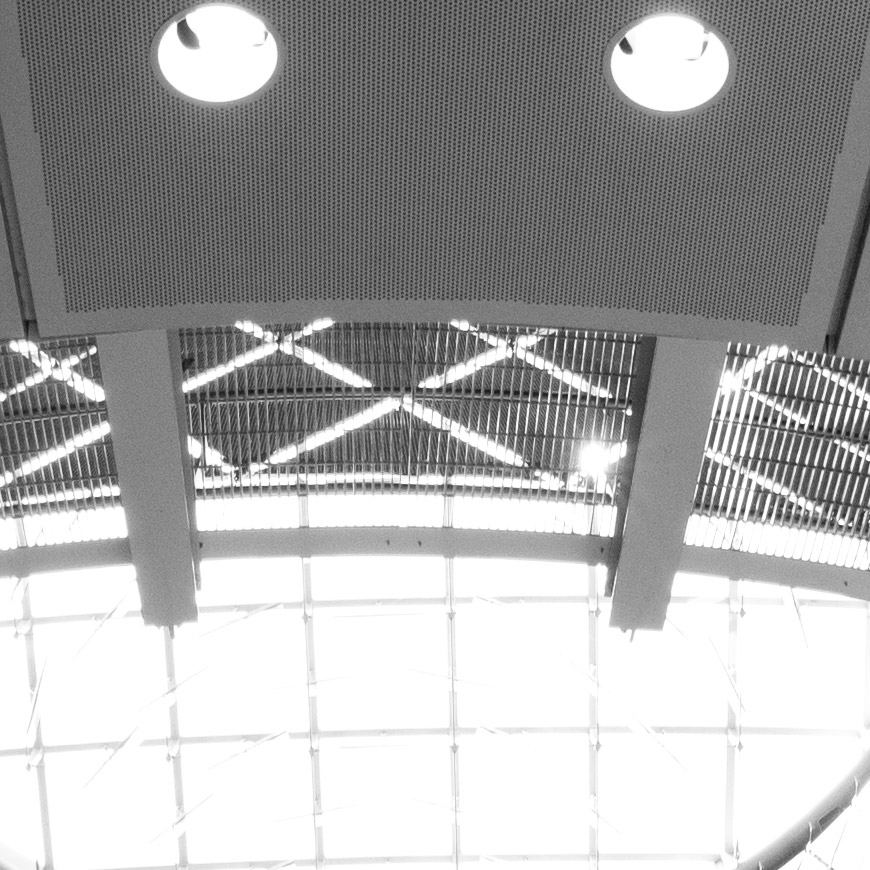
100% crop, perfect resolution on the top edge of the frame, as well the contrast when backlit.

100% crop, perfect graphics and edges.
Another performance highlights are the complete absent of saggital coma flare, great for astrophotography; colors balanced with the whole Canon lineup; and well handled internal reflexes due to the Subwavelength Structure coating. On such a wide frame, it is common to see the light source in sight, that might cause issues with flaring and ghosting on lower end lenses. But nothing happens on this EF L: the images are clean and clear, a perfect rendering to what was in front of the lens. It’s great to shoot action during the day, lit by the sun; or at night, with bright spots of light. I runs circles around any GoPro camera, that can’t handle extreme light situations.
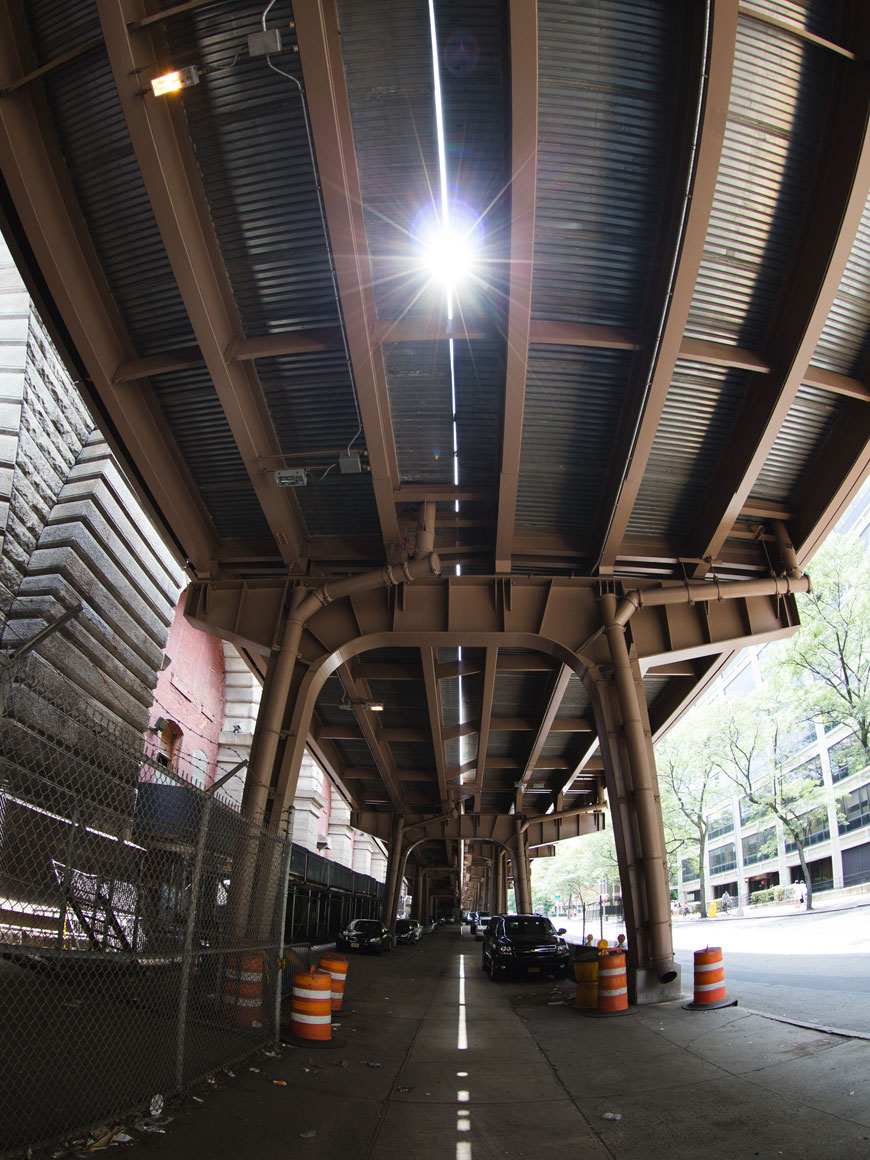
“Sol” at f/4 1/160 ISO200 @ 10mm; some flaring and the stars generated by the circular aperture (even wide open).

100% crop, frame edge showing slight signs of saggital coma flare, besides the lateral CA.
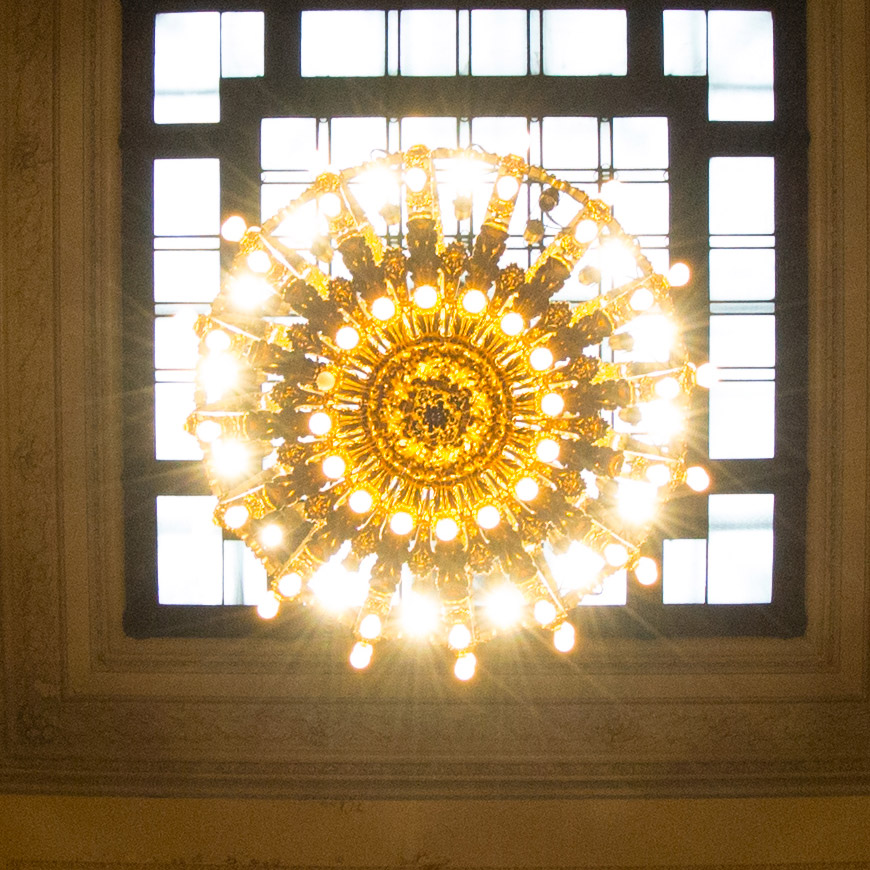
100% crop, intact contrast besides the strong light sources, even wide open.
The Canon EF 8-15mm f/4L Fisheye USM is what we expect from the L series: second to none build quality, perfect usability and excellent optics. There’s nothing wrong with it and I don’t really have to recommend it; those in need of a Fisheye lens to fit the Canon system, you know this is it! What justifies the high cost is the zoom and the possibility to use it on any format. Although the circular 180º 8mm full frame look is linked to this lens, honestly it’s the worst example of what it can do. Think about your APS-C at 10mm and the IQ (and bursting speed) that no GoPro can do. Or at 13mm on APS-H (an used 1D Mark IV, anyone?). Even on full frame at 15mm, it’s a substancial upgrade to the vintage prime (built, operation, AF). There’s nothing new on the EF 8-15mm Fisheye USM, just the expected quality from Canon’s L series. It’s excellent as usual. Nice shooting!